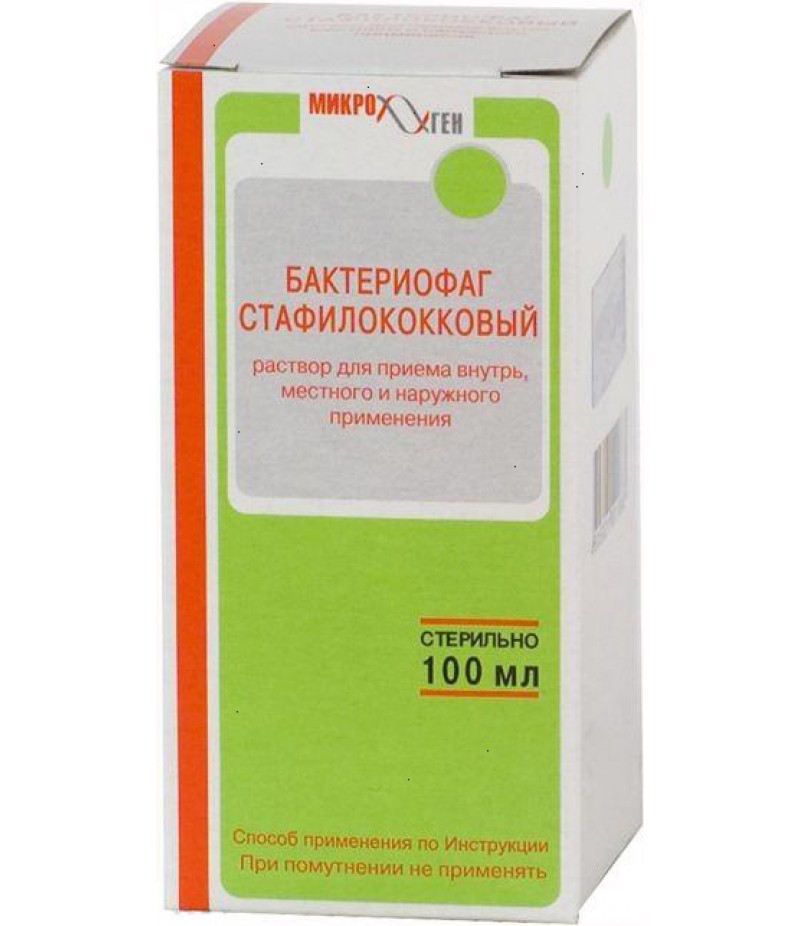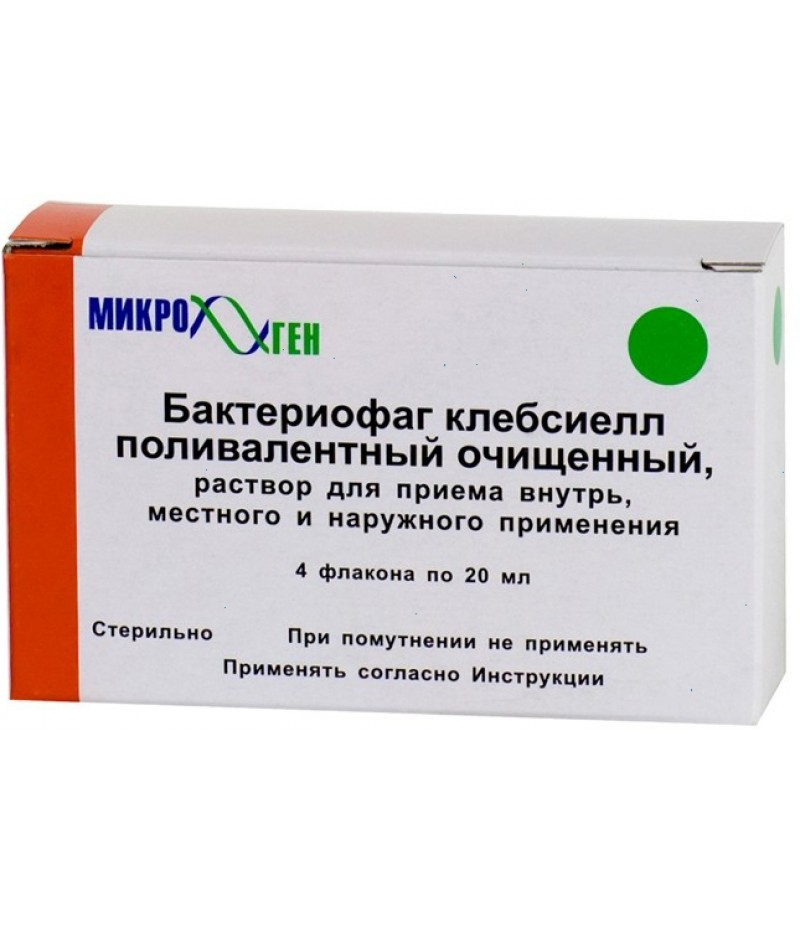Bacteriofag Stafilococ 100ml
- $49.98
- 2 or more $48.60
- 3 or more $47.91
- Availability:In Stock
Bacteriofag Stafilococ instruction for useReed more and buy Bacteriofag Stafilococ on this pageCompositionThe active ingredient of the preparation Staphylococcum Bacteriofag is an antistaphylococcal Bacteriofag in liquid form, in ..
Bacteriofag Stafilococ instruction for use
Reed more and buy Bacteriofag Stafilococ on this page
Composition
The active ingredient of the preparation Staphylococcum Bacteriofag is an antistaphylococcal Bacteriofag in liquid form, in the form of suppositories, ointments or tablets.
An additional substance is quinazole.
Form of issue
50, or 100 ml of such solution in a vial - one bottle in a cardboard box.
20 ml of this solution in a vial - four vials in a cardboard box.
25 ml of this solution in aerosol packaging - one package in a cardboard box.
10 and 20 grams of ointment in a vial, one vial in a cardboard box.
10 candles per pack, one carton in carton.
10, 25 and 50 tablets per package, one package in a cardboard box.
pharmachologic effect
Antibacterial action.
Pharmacodynamics and pharmacokinetics
What is a Bacteriofag?
This drug is relatively new in the market of medicines and many patients have a natural question: "Bacteriofag - what is it?"
Bacteriofags are viral particles that kill only certain types of pathogenic bacteria. On their basis, appropriate drugs are created. The discovery of the drugs belongs to the Canadian scientist Felix D'Erel.
Structure of Bacteriofags
An ordinary Bacteriofag consists of a tail and a head. The tail is usually 3-4 times longer than the diameter of the head. The head contains a double-stranded or single-stranded RNA or DNA with an inactive transcriptase surrounded by a coat of protein or lipoprotein called the capsid.
Reproduction of Bacteriofags
As with common viruses, the cycle of reproduction in lytic Bacteriofags can be conditionally divided into phage adsorption on the cell wall, introduction of DNA, phage reproduction, and evacuation of daughter populations from the cell.
The attachment of a phage to a bacterial cell is due to its surface structures, which serve as specific receptors for viruses. In addition to receptors, the addition of phage depends on the temperature, acidity of the medium, the presence of cations and a number of other compounds. One cell can adsorb up to 300 particles of viruses.
After attachment, the cell wall is cleaved with lysozyme enzymes. At the same time, calcium ions are activated that activate ATPase - this causes a reduction in the cover and insertion of the tail stem into the cell. Then, the virus DNA is injected into the cytoplasm. Penetrating into the bacterium, the phage DNA takes control of the genetic apparatus of the cell, carrying out the reproductive cycle of the phage.
First of all, the synthesis of enzymes necessary for the formation of copies of DNA phage (DNA polymerase, thymidylate synthetase, kinase) occurs. It takes 5-7 minutes from the time of infection. The cell's RNA polymerase converts the viral DNA into a mitochondrial RNA, which is translated by the ribosomes into the "early" proteins. "Early" proteins are mainly viral RNA polymerase and proteins that limit the expression of bacterial genes. Viral RNA polymerase produces transcription, the so-called "late" proteins needed to assemble new phage particles.
Reproduction of nucleic acids is due to the activity of the synthesized DNA polymerases of the virus. By the end of the cycle, the phage components are combined into a mature virion.
Evacuation of Bacteriofag populations from the cell
The biosynthesized proteins in the cytoplasm form a pool of progenitors. Another pool includes the DNA of the offspring. Specialized regions in the DNA of the virus induce the union of these proteins near groups of nucleic acid molecules and the synthesis of new heads. The head interacts with the tail, forming a daughter phage. After the release of the progeny, the host cell is destroyed, releasing a new population.
An alternative to cell destruction can be an integrative form of interaction in which the phage DNA instead of replicating is inserted into the chromosome of the bacterium or becomes a plasmid. As a result, the genome of the virus replicates with the host's DNA.
Types of Bacteriofags
The use of Bacteriofags causes their clinical classification. Based on this thesis, we can distinguish the following types of Bacteriofags:
Bacteriofags for the treatment of intestinal infections: dysentery, polyvalent, salmonella AVSDE-groups, typhoid, coliprotein, intesti-Bacteriofag (phage mix against the most frequent causative agents of intestinal infections);
Bacteriofags for the treatment of purulent-septic lesions: Klebsiella pneumonia, Klebsiella polyvalent, Pseudomonas, AntiStaphylococcum Bacteriofag, coli, Proteus, streptococcal, combined pioBacteriofag (a mixture of phages that kill most likely pathogens of purulent-septic infections).
The use of Bacteriofag preparations in medicine is becoming more widespread due to the increased incidence of polyvalent resistance of pathogens to antibacterial agents.
Indications for use
How should I take this medicine? The drug is used for the therapy and prevention of diseases that cause Staphylococcum:
urogenital infections (cystitis, urethritis, pyelonephritis, salpingoophoritis, endometritis, colpitis);
infections in surgery (burns, suppuration of wounds, abscesses, furuncles, phlegmon, carbuncles, panaritium, hydradenitis, paraproctitis, bursitis, mastitis, osteomyelitis);
diseases of the throat, ear, nose, respiratory organs (inflammation of the middle ear, sinuses of the nose, pharyngitis, tonsillitis, pneumonia, laryngitis, bronchitis, tracheitis, pleurisy);
infections of the digestive tract (gastroenterocolitis), intestinal dysbacteriosis, cholecystitis;
prevention of postoperative septic complications;
prevention of hospital infections.
Contraindications
There are no contraindications to the use of this remedy.
Side effects
Undesirable reactions to the administration of the drug are not established.
With the intradermal route of administration, short-term hyperemia and inflammation are possible.
Instruction on Staphylococcum Bacteriofag (Method and dosage)
The drug is injected into the foci of infection. The multiplicity of injections and their size is established by determining the clinical form of the disease, the nature of the infectious focus and the standard recommendations. The average duration of treatment is 5-15 days. In cases of relapse, additional courses of treatment are possible. Instruction for the use of Bacteriofag staphylococcal for children and adults is somewhat different. Recommendations for the use of the drug for children are given at the end of the section.
The liquid phage is allowed to be applied topically in the form of lotions, irrigation or tamponing in a volume of up to 200 ml given the size of the lesion site. Also for topical application is ointment.
Therapy of purulent-inflammatory limited lesions is advisable to be performed both locally and orally within 1-4 weeks.
With purulent inflammatory lesions of the throat, ear or nose, the drug is used to rinse, instill, rinse and inject wetted turundum 2-10 ml to three times a day.
In carbuncles and furuncles, the liquid Bacteriofag is injected directly into or around the site, daily at 0.5-2 ml. A total of 5 injections are given for the course of treatment.
Treatment of chronic osteomyelitis is performed by pouring the drug into the wound immediately after surgical treatment.
When abscesses, the Bacteriofag is injected into the cavity, emptied from the pus of the focus. When the abscess is opened into the wound, a tampon moistened with the drug is injected.
Treatment of deep pyodermitis is carried out by intradermal injection of the drug in one place in 0.1-0.5 ml or in several places in a total dose of up to 2 ml. Introductions are made every 24 hours, only 10 injections.
Capillary drainage is used to introduce into the abdominal, pleural, articular cavity, injecting up to 100 ml of a Bacteriofag every other day. Only 3-4 of these injections.
In cystitis, the agent is injected into the bladder via a catheter.
With purulent bursitis, pleurisy or arthritis, the drug is injected into the cavity, previously emptied of pus to 20 ml every other day. The course of treatment is 3-4 injections.
Also Staphylococcal Bacteriofag is used orally in the form of tablets in the treatment of urogenital infections (cystitis, pyelonephritis, pyelitis, salpingo-oophoritis, endometritis), intestinal infections and other diseases caused by Staphylococcum.
How to use Staphylococcum Bacteriofag in intestinal staphylococcal lesions and intestinal dysbacteriosis: the drug is used orally inward on an empty stomach three times a day for 2 hours before eating; rectally in the form of candles or enemas, the drug is prescribed once a day. Treatment is carried out for 7-10 days.
The newborn in the first 2 doses of the drug is diluted with an equal amount of water. It can also be mixed with breast milk.
When sepsis or enterocolitis in newborns, the remedy is used with the setting of high enemas up to three times a day. The combination of rectal and oral administration is allowed.
In the treatment of pyoderma, omphalitis, purulent wounds in newborns, the drug is used in the form of applications twice a day and in the form of tablets - 1 piece up to four times a day. Ointment is used locally with bandages of 5-20 grams up to two times a day.
In the prevention of enterocolitis and sepsis in newborns, if there is a danger of developing a hospital infection or intrauterine infection, the drug is used in the form of enemas twice a day for a week.
In the aerosol form, the Bacteriofag Staphylococcum is used to irrigate the affected mucous membranes and skin with purulent-inflammatory lesions, burns, septic wounds and sore throat.
The most valid application of this tool in cases of infection with antibiotic-resistant strains.
Overdose
Such cases have not been studied.
Interaction
If local antiseptic solutions (not including furacilin), the affected area should be washed with saline or 3% sodium hydrogen carbonate solution.
Terms of sale
The release of the drug is allowed without a prescription.
Storage conditions
Store at a temperature of 2-10 degrees in a dark place. Keep away from children.
Shelf life - 2 years.
special instructions
Treatment with the drug should be started as soon as possible.
Before use, the preparation should be shaken, a muddy solution should not be used.
When opening the vial, storing and selecting the remedy, the following rules should be observed:
hands must be thoroughly washed;
Before removal, the cap should be treated with an alcohol solution;
remove the cap without removing the stopper;
the drug from the opened vial should be selected only by puncturing the plug with a sterile syringe;
if the plug was accidentally uncorked with the cap, it should not be placed on the table with the internal surface, and the bottle should not be left open (after removing the product it must be closed with a stopper);
it is recommended to store the opened bottle in the refrigerator.
Subject to compliance with these rules and in the absence of turbidity, the product from the opened bottle is allowed to be used throughout the shelf life.
Children
The drug is allowed to use in newborns and children of all ages.
With antibiotics
It is not forbidden to combine the drug with antibiotics.
In pregnancy and lactation
It is possible to use the drug in these periods under the supervision of the attending physician.
Reviews about Staphylococcum Bacteriofag
Despite many cases of cure, the therapeutic effect of taking the drug is not guaranteed in all cases. This is evidenced by reviews of the Bacteriofag Staphylococcum. This feature is more often detected when the drug is used for newborns and young children.
The effectiveness of the drug may vary depending on the sensitivity of the particular strain to the phage and other factors that should be determined before starting treatment.
In some situations, parents prematurely stop treatment for infants, frightened of the allegedly increased symptoms of the disease, and then report that the drug did not affect the baby. In any case, before deciding to undergo therapy with this medication, and during treatment should be observed with the attending physician and all incomprehensible questions be clarified from him.


